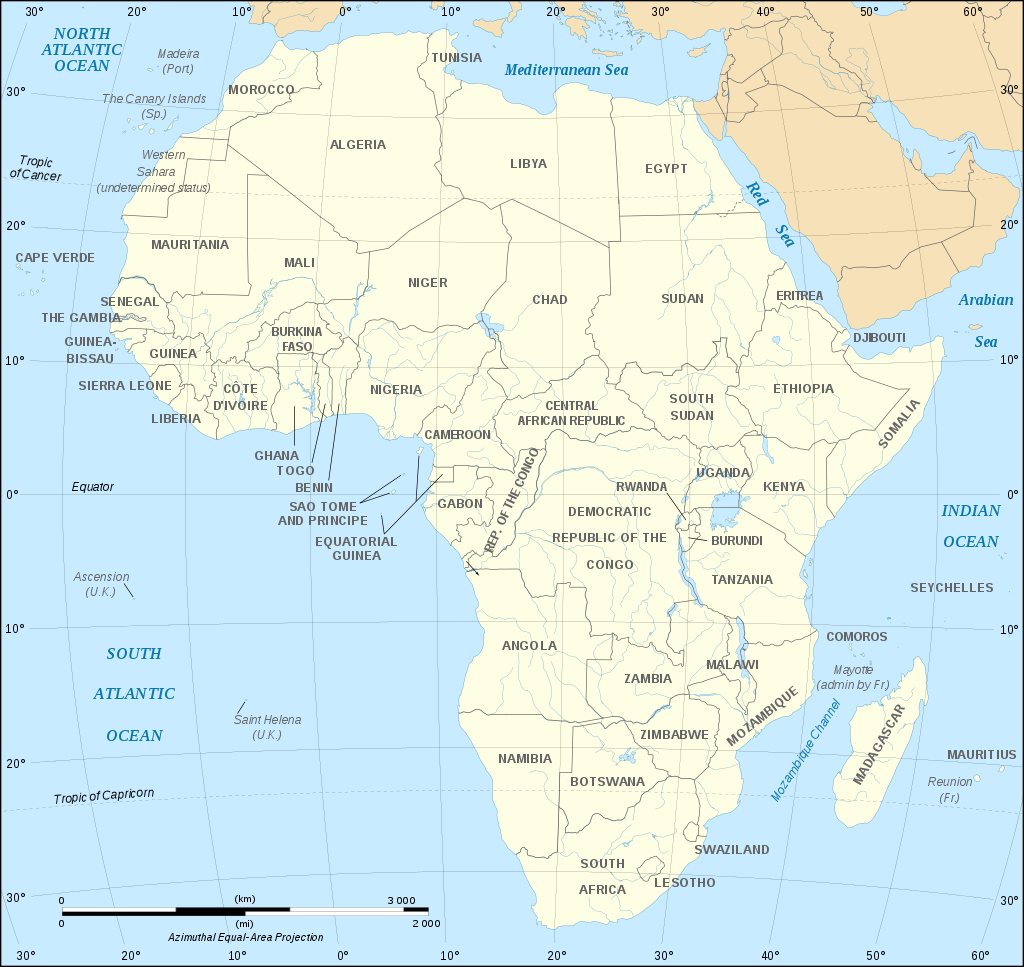Pre-colonial Africa (that means before the Europeans came to colonize) had many different kingdoms and
city-states, most small, some large, like the Songhai Empire in West Africa in the 15th and 16th centuries. The
picture you see is the ruined city of Great Zimbabwe, the capital of the Kingdom of Zimbabwe in the 11th - 15th
centuries.
By the end of the 19th century, European countries such as England, France, Belgium, and Portugal, had taken
all of Africa as their colonies, leaving only Ethiopia and Liberia as independent states. One effect of
colonization that remains to this day is that all countries of Sub-Saharan Africa use a European language
(mostly English, French, or Portuguese) as their official language, along with various African languages. The
picture you see depicts the Mahdist War, between British troops and the Sudanese.
Slavery, sadly, has a long history in Africa. From the 7th through the 20th centuries, Arabs took around 18
million slaves from Africa. Between the 15th – 19th centuries, Europeans took between 7 – 12 million slaves to
the New World. Additionally, over 1 million Europeans were captured by the Barbary Pirates and sold as slaves in
North Africa between the 16th and 19th centuries. In the 19th century the creation of laws against slavery
increased in Europe, and the British Navy seized about 1,600 slave ships and freed some 150,000 Africans who
were aboard the ships. In the picture you see a scene of Arab slave traders with their captives, as witnessed by
the famous David Livingstone.
One interesting group of people, actually a number of groups, are the Pygmies of central Africa. They are known
for their short stature and traditionally have had a hunter-and-gatherer lifestyle deep in the forests, although
most of the nearly 1 million Pygmies in Africa today no longer follow this lifestyle. In the picture you can see
Pygmy warriors posing around 1915.
In Africa today, there are many large cities with very large populations, such as Lagos, Nigeria (pictured),
with 21 million people, and Cairo, Egypt, with about 20 million. Its cities feature many modern amenities but
also have many problems, such as crime and poverty.


